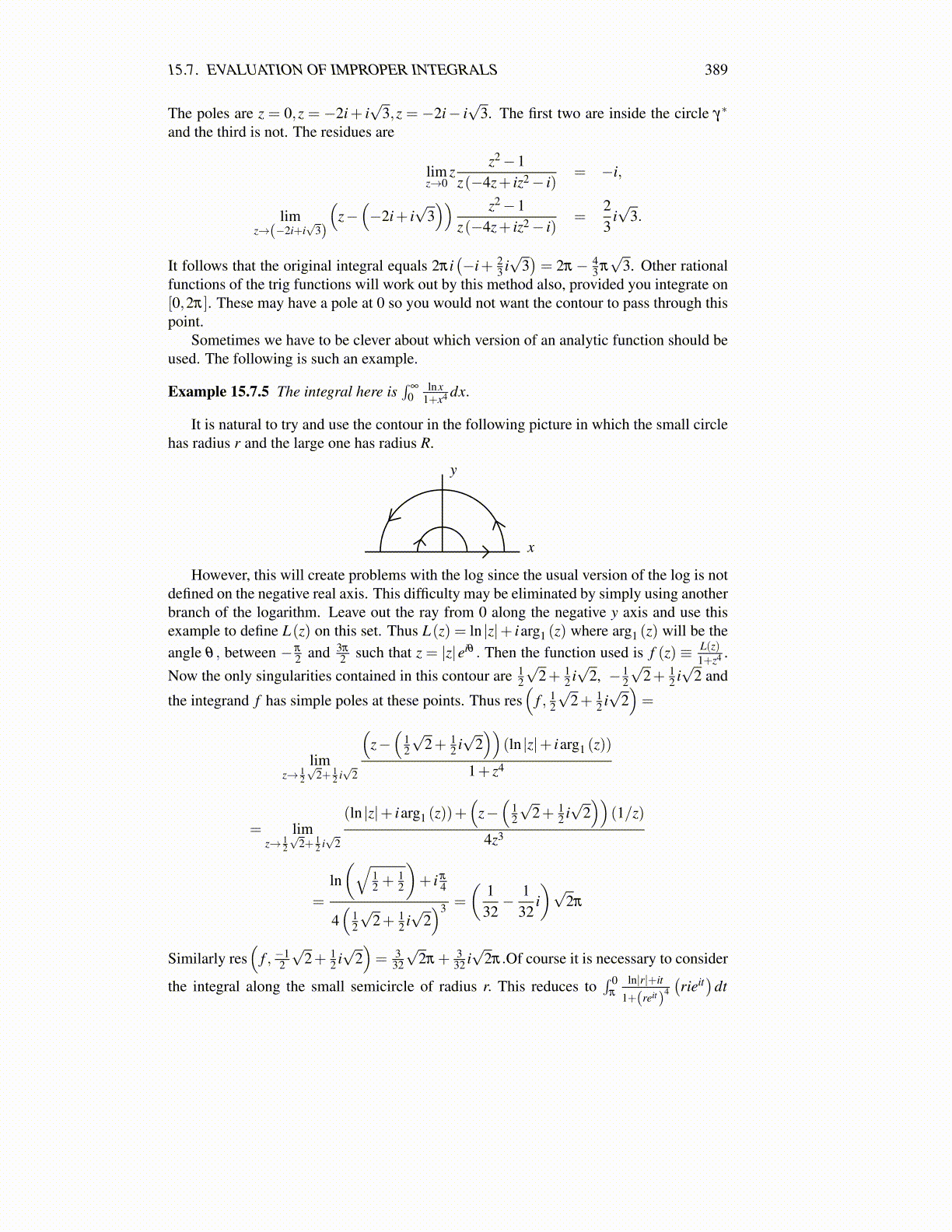
15.7. EVALUATION OF IMPROPER INTEGRALS 389
The poles are z = 0,z = −2i+ i√
3,z = −2i− i√
3. The first two are inside the circle γ∗
and the third is not. The residues are
limz→0
zz2−1
z(−4z+ iz2− i)= −i,
limz→(−2i+i
√3)
(z−(−2i+ i
√3)) z2−1
z(−4z+ iz2− i)=
23
i√
3.
It follows that the original integral equals 2πi(−i+ 2
3 i√
3)= 2π − 4
3 π√
3. Other rationalfunctions of the trig functions will work out by this method also, provided you integrate on[0,2π]. These may have a pole at 0 so you would not want the contour to pass through thispoint.
Sometimes we have to be clever about which version of an analytic function should beused. The following is such an example.
Example 15.7.5 The integral here is∫
∞
0lnx
1+x4 dx.
It is natural to try and use the contour in the following picture in which the small circlehas radius r and the large one has radius R.
x
y
However, this will create problems with the log since the usual version of the log is notdefined on the negative real axis. This difficulty may be eliminated by simply using anotherbranch of the logarithm. Leave out the ray from 0 along the negative y axis and use thisexample to define L(z) on this set. Thus L(z) = ln |z|+ iarg1 (z) where arg1 (z) will be theangle θ , between −π
2 and 3π
2 such that z = |z|eiθ . Then the function used is f (z) ≡ L(z)1+z4 .
Now the only singularities contained in this contour are 12
√2+ 1
2 i√
2, − 12
√2+ 1
2 i√
2 and
the integrand f has simple poles at these points. Thus res(
f , 12
√2+ 1
2 i√
2)=
limz→ 1
2√
2+ 12 i√
2
(z−(
12
√2+ 1
2 i√
2))
(ln |z|+ iarg1 (z))
1+ z4
= limz→ 1
2√
2+ 12 i√
2
(ln |z|+ iarg1 (z))+(
z−(
12
√2+ 1
2 i√
2))
(1/z)
4z3
=
ln(√
12 +
12
)+ i π
4
4(
12
√2+ 1
2 i√
2)3 =
(1
32− 1
32i)√
2π
Similarly res(
f , −12
√2+ 1
2 i√
2)= 3
32
√2π + 3
32 i√
2π.Of course it is necessary to consider
the integral along the small semicircle of radius r. This reduces to∫ 0
π
ln|r|+it
1+(reit)4
(rieit
)dt